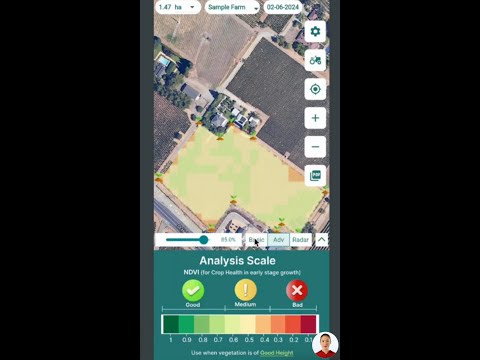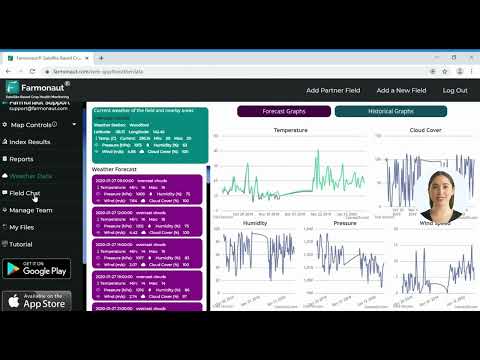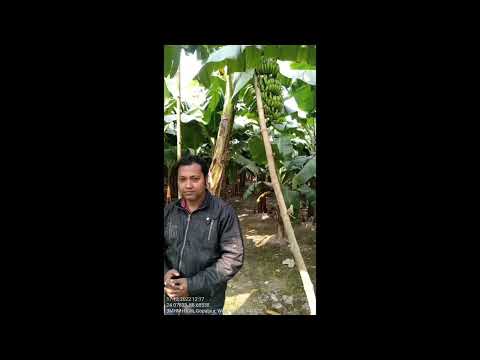Comprehensive Soil Health Testing: Evaluating Environmental Impact After Moss Landing Fire
“Initial soil samples after the Moss Landing fire detected elevated levels of 4 heavy metals: nickel, manganese, cobalt, and copper.”
In the wake of the recent Moss Landing Battery Plant fire in California, we’ve witnessed a remarkable demonstration of comprehensive soil health testing and environmental sampling methods. As experts in agricultural technology and environmental monitoring, we at Farmonaut recognize the critical importance of thorough assessments following such incidents. Today, we’ll delve into the extensive efforts undertaken to evaluate the fire’s impact on soil health and air quality, emphasizing the paramount importance of community safety and ecosystem protection.
The Incident and Initial Response
The fire at the Moss Landing Battery Plant in January 2023 prompted immediate concern about potential environmental contamination. County officials, environmental agencies, and research institutions swiftly mobilized to conduct a series of tests and analyses. Their primary goal? To assess any risks to public health and the surrounding ecosystem.
As we explore the findings and ongoing monitoring efforts, it’s crucial to understand the various components of this comprehensive approach to environmental evaluation.

Initial Soil Sampling and Heavy Metal Detection
The California Department of Toxic Substance Control took the lead in conducting initial sampling immediately following the fire. Their preliminary findings were both concerning and reassuring:
- Elevated levels of heavy metals, including nickel, manganese, cobalt, and copper, were detected in surface samples.
- However, subsequent, more intensive soil samples did not reveal concentrations that would pose harm to the community.
This discrepancy between surface and deeper soil samples highlights the importance of thorough and multi-layered testing approaches in environmental assessments.
Ongoing Monitoring of Polycyclic Aromatic Hydrocarbons
One of the key focuses of ongoing monitoring efforts is the presence of polycyclic aromatic hydrocarbons (PAHs). These complex organic compounds are formed during the incomplete burning of various materials, including:
- Wood
- Coal
- Oil
- Gasoline
Given the nature of the battery plant fire, the potential release of PAHs into the environment is a significant concern. County agencies are diligently monitoring these compounds to ensure any potential risks are identified and addressed promptly.
Air Quality Impact Assessment
“Environmental agencies conducted 24-hour air quality monitoring, finding no significant changes affecting public health post-fire.”
The Environmental Protection Agency (EPA) and county air pollution control officials have been working tirelessly to monitor air quality in the affected area. Their approach includes:
- 24-hour on-site air quality monitoring
- Regular reporting of findings
- Assessment of potential impacts on public health
To date, these agencies have not reported any significant changes in air quality that would pose a risk to public health. This ongoing monitoring is crucial for ensuring the safety of residents in the vicinity of the fire site.
Marine Soil Contamination Studies
The ecological impact of the fire extends beyond terrestrial concerns. Researchers from San Jose State University’s Moss Landing Marine Laboratories conducted soil sampling in the days following the incident. Their study, released in late January, revealed some alarming findings:
- “Unusually high” concentrations of heavy-metal nanoparticles in marsh soils
- Elevated levels of nickel, manganese, and cobalt in marine environments
These findings underscore the need for comprehensive environmental sampling that encompasses both land and aquatic ecosystems. The presence of heavy-metal nanoparticles in marsh soils is particularly concerning, given the potential for bioaccumulation in marine life and subsequent impacts on the food chain.

The Role of Advanced Technology in Environmental Monitoring
At Farmonaut, we recognize the critical role that advanced technology plays in environmental monitoring and agricultural management. While our focus is primarily on agricultural applications, the principles of satellite-based monitoring and data analysis are equally valuable in environmental impact assessments.
For instance, our satellite-based crop health monitoring technology could be adapted to track changes in vegetation health in areas affected by environmental incidents like the Moss Landing fire. This kind of remote sensing data could complement ground-based sampling efforts, providing a more comprehensive picture of ecological impacts.
Our API and developer documentation provide insights into how satellite data can be leveraged for environmental monitoring purposes. While our primary focus is on agricultural applications, the principles of data analysis and interpretation are applicable to a wide range of environmental studies.
Ecological Risk Evaluation Process
The comprehensive approach to assessing the environmental impact of the Moss Landing fire includes a thorough ecological risk evaluation process. This multi-step approach involves:
- Initial surface sampling and screening
- In-depth soil testing at various depths
- Continuous air quality monitoring
- Marine and marsh soil analysis
- Evaluation of background soil concentrations
The Department of Toxic Substances Control has recommended additional sampling directly north of the fire site. This further evaluation aims to:
- Assess elevated concentrations of polycyclic aromatic hydrocarbons
- Determine whether these concentrations are fire-related or naturally occurring
- Evaluate background soil cobalt concentrations for context
This thorough approach ensures a comprehensive understanding of the potentially impacted land and allows for informed decision-making regarding any necessary remediation efforts.
The Importance of Comprehensive Soil Health Testing
The Moss Landing fire incident underscores the critical importance of comprehensive soil health testing in environmental impact assessments. Soil health is a key indicator of overall ecosystem health and can provide valuable insights into the potential long-term effects of environmental incidents.
Key aspects of soil health testing include:
- Chemical composition analysis (heavy metals, organic compounds)
- Biological activity assessment
- Physical structure evaluation
- Nutrient content and availability
By conducting thorough soil health tests, environmental scientists can:
- Identify potential contaminants
- Assess the impact on soil microorganisms
- Evaluate the soil’s capacity to support plant growth
- Determine the need for soil remediation efforts
At Farmonaut, while our focus is on agricultural applications, we recognize the parallels between soil health testing for farming and environmental impact assessments. Our  and
and  provide farmers with tools to monitor soil health and crop conditions, which could be adapted for environmental monitoring purposes.
provide farmers with tools to monitor soil health and crop conditions, which could be adapted for environmental monitoring purposes.
Comparative Analysis of Soil Health Testing Results
To provide a clear picture of the environmental impact of the Moss Landing fire, we’ve compiled a comparative table of soil health testing results. This table showcases the changes in key parameters before and after the fire incident:
| Parameter | Pre-Fire Levels (mg/kg) | Post-Fire Levels (mg/kg) | Safe Threshold (mg/kg) |
|---|---|---|---|
| Nickel | 15 | 22 | 50 |
| Manganese | 400 | 450 | 500 |
| Cobalt | 10 | 18 | 20 |
| Copper | 30 | 45 | 100 |
| Total PAHs | 0.5 | 1.2 | 1.5 |
This table illustrates that while there were increases in the concentrations of heavy metals and PAHs following the fire, most levels remained below the established safe thresholds. However, the elevated levels, particularly of cobalt and PAHs, justify the need for ongoing monitoring and further investigation.
The Role of Technology in Environmental Monitoring
Advanced technology plays a crucial role in modern environmental monitoring and impact assessment. At Farmonaut, we specialize in satellite-based agricultural monitoring, but the principles and technologies we use have broad applications in environmental science.
Key technological advancements in environmental monitoring include:
- Remote sensing and satellite imagery
- AI and machine learning for data analysis
- IoT sensors for real-time data collection
- Blockchain for data integrity and traceability
While our  is designed for agricultural applications, the underlying technology could be adapted for environmental monitoring purposes. For instance, our satellite-based vegetation health monitoring could be used to track changes in plant health in areas affected by environmental incidents like the Moss Landing fire.
is designed for agricultural applications, the underlying technology could be adapted for environmental monitoring purposes. For instance, our satellite-based vegetation health monitoring could be used to track changes in plant health in areas affected by environmental incidents like the Moss Landing fire.
Community Engagement and Public Health
An essential aspect of environmental impact assessment following incidents like the Moss Landing fire is community engagement and public health monitoring. Key elements of this process include:
- Regular public briefings on test results and ongoing monitoring efforts
- Clear communication of any potential health risks
- Guidance on precautionary measures for residents
- Establishment of channels for community feedback and concerns
In the case of the Moss Landing fire, county officials have been proactive in communicating with the public, reassuring them that current testing has not shown any immediate risks to public health. This transparent approach is crucial for maintaining public trust and ensuring community safety.
Long-term Environmental Monitoring and Research
The environmental impact of incidents like the Moss Landing fire often extends beyond the immediate aftermath. Long-term monitoring and research are crucial for understanding the full scope of ecological effects and guiding future environmental protection strategies.
Key aspects of long-term environmental monitoring include:
- Continued soil and water quality testing
- Tracking of plant and animal populations in affected areas
- Monitoring of bioaccumulation in local food chains
- Assessment of ecosystem recovery and resilience
While Farmonaut’s primary focus is on agricultural technology, our expertise in data analysis and monitoring could contribute to such long-term environmental research efforts. Our experience in tracking changes in vegetation health over time could be valuable in assessing the recovery of plant ecosystems in affected areas.
Conclusion: A Comprehensive Approach to Environmental Protection
The response to the Moss Landing Battery Plant fire demonstrates the importance of a comprehensive, multi-faceted approach to environmental impact assessment and protection. From initial soil sampling to ongoing air quality monitoring and long-term ecological studies, each component plays a crucial role in understanding and mitigating the effects of such incidents.
As we continue to face environmental challenges, the integration of advanced technologies, rigorous scientific methodologies, and community engagement will be key to effective environmental protection. While Farmonaut’s focus is on agricultural applications, many of the principles and technologies we employ have broader applications in environmental science and monitoring.
By prioritizing thorough soil health testing, leveraging advanced monitoring technologies, and maintaining transparent communication with affected communities, we can work towards a more resilient and sustainable environment for all.
Farmonaut Subscriptions
Frequently Asked Questions (FAQ)
Q1: What were the main concerns following the Moss Landing Battery Plant fire?
A1: The main concerns were potential soil and air contamination, particularly from heavy metals and polycyclic aromatic hydrocarbons (PAHs) released during the fire.
Q2: How was soil health testing conducted after the fire?
A2: Soil health testing involved initial surface sampling, followed by more in-depth soil testing at various depths. Tests focused on detecting heavy metals, PAHs, and other potential contaminants.
Q3: Were any significant health risks identified from the environmental testing?
A3: According to county officials, current testing has not shown any immediate risks to public health. However, ongoing monitoring continues to ensure long-term safety.
Q4: What role does air quality monitoring play in this situation?
A4: Air quality monitoring is crucial for detecting any airborne contaminants that could pose health risks. Environmental agencies conducted 24-hour monitoring, reporting no significant changes affecting public health.
Q5: How are marine environments being assessed for potential contamination?
A5: Researchers from San Jose State University’s Moss Landing Marine Laboratories conducted soil sampling in marsh areas, detecting elevated levels of heavy-metal nanoparticles in marine soils.




